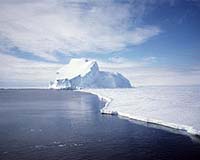| . |  |
. |
Vancouver, Canada (AFP) Sept 9, 2010 After years of scarcity, the rivers of the US and Canadian Pacific Northwest are running red, literally, with a vast swarm of a salmon species considered to be in crisis. Sockeye salmon, whose stocks ran perilously low last year, are gushing in record numbers from the Pacific Ocean toward their spawning grounds far inland. Since mid-August, in a torrent expected to last through early October, sockeye have plunged and leapt up Alaskan streams, massed through the mouth of the mighty Fraser River in Vancouver, and filled Oregon and Washington waterways. "We don't know why for certain," said Barry Rosenberger, a manager with Canada's federal fisheries department. All experts agree that conditions have been near-perfect for this year's sockeye, a strikingly red species with a dramatic four-year life cycle. Since they hatched inland in 2006, then migrated from freshwater to the ocean in 2008, the fish enjoyed such plentiful food of krill and plankton, preferred cold ocean temperatures, and a dearth of predators, that massive numbers have matured to return to their birthplaces to spawn and die. "Salmon have had us on a roller coaster," said marine biologist John Reynolds of Simon Fraser University. "Last year we had the lowest return in at least 50 years, and this year it looks like it will be the highest in nearly a century." The bounty follows years of intense scarcity that closed or restricted many fishing areas, mostly in Canada where the 2009 near-demise of sockeye in the Fraser River prompted Canada to appoint a commission to investigate. It began holding public meetings in August just as the massive 2010 return began. The numbers this year affect Japan and Russia as well as North America, and are shocking: in the United States, an estimated 40 million sockeye entering six Alaskan river systems through Bristol Bay broke all records, Rosenberger told AFP. The Columbia River in Oregon has seen "the largest sockeye return since 1938," he said, while Japan and Russia are enjoying "phenomenal returns." But the biggest news is in Vancouver, where the largest sockeye return in nearly a century is entering the mouth of the Fraser River -- arguably the world's single largest historic salmon migration route. On Tuesday the joint Canada-US Pacific Salmon Commission increased its estimate of Fraser sockeye to 34.5 million fish, while Canada's fisheries department said native, commercial and sports fishers caught some 10.7 million. Before the local commercial fishery wrapped up Tuesday, the glut overwhelmed local canneries and sent consumer prices plunging by as much as 70 percent to 15 dollars per fish, as people lined up at wharves to buy directly from boats. The last major Fraser run was some 39 million fish in 1913 -- before disaster struck at the aptly-named Hell's Gate, 200 kilometers (124 miles) northeast of Vancouver. After a railroad construction crew sent a rockslide crashing into Hell's Gate, more than 38 million salmon battered themselves to death against the barrier; only about two percent of the run made it through, according to the fisheries department. The disaster was devastating in a region where salmon are iconic: local aboriginals are known as "people of the salmon." Explained Rashid Sumaila, director of the University of British Columbia Fisheries Centre, "everybody (here) has some special attachment to salmon." Following decades of conservation measures and repairs to migration routes, local residents are now expressing hope. "These are days of miracle and wonder for those of us who care about the fate of wild salmon," wrote author Stephen Hume in a local newspaper column. "This is what the river was like every year in the past," Joe Becker, a special commissioner for salmon with the Musqueam Indian Band told AFP from his boat on the Fraser. "There was this fear hanging on us, maybe this salmon has gone forever -- but maybe they can come back, we haven't lost them," said Sumaila. Still, no one is calling the bonanza of 2010 the start of a trend. "Wait to see if it builds up over years before we get confident," said Sumaila.
Share This Article With Planet Earth
Related Links Water News - Science, Technology and Politics
 Marine Animals Suggest Evidence For A Trans-Antarctic Seaway
Marine Animals Suggest Evidence For A Trans-Antarctic SeawayLondon, UK (SPX) Sep 09, 2010 A tiny marine filter-feeder, that anchors itself to the sea bed, offers new clues to scientists studying the stability of the West Antarctic Ice Sheet - a region that is thought to be vulnerable to collapse. As part of a study for the Census of Antarctic Marine Life (CAML), scientists from British Antarctic Survey (BAS) analysed sea-bed colonies of bryozoans from coastal and deep sea regio ... read more |
|
| The content herein, unless otherwise known to be public domain, are Copyright 1995-2010 - SpaceDaily. AFP and UPI Wire Stories are copyright Agence France-Presse and United Press International. ESA Portal Reports are copyright European Space Agency. All NASA sourced material is public domain. Additional copyrights may apply in whole or part to other bona fide parties. Advertising does not imply endorsement,agreement or approval of any opinions, statements or information provided by SpaceDaily on any Web page published or hosted by SpaceDaily. Privacy Statement |